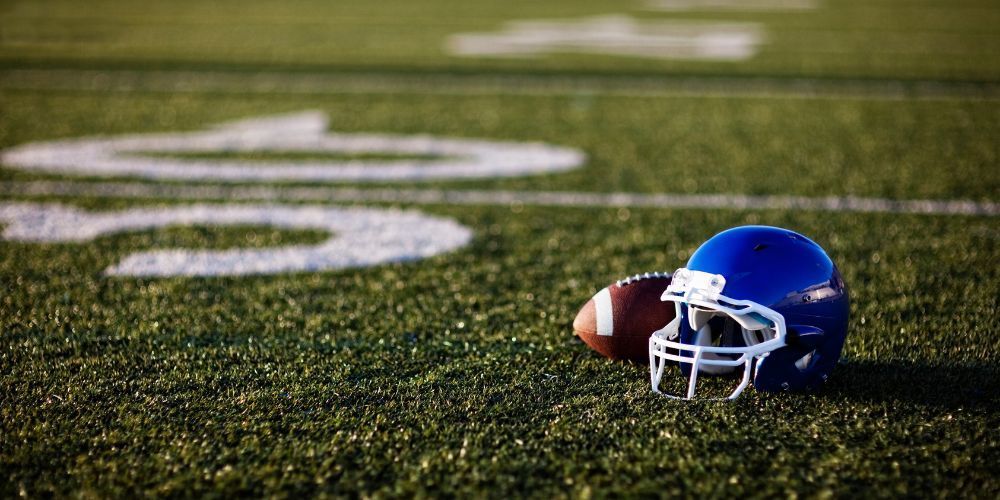When to Pick or Save Good Teams in a Survivor Pool
William Flaiz • May 21, 2025
Survivor pools, also known as eliminator or knockout pools, are a thrilling and strategic form of football betting where participants must pick one winning team each week without repeating selections. The catch? A single wrong pick, and you're out. With the stakes so high, knowing when to pick or save good teams can make or break your season. This guide will walk you through the art of long-term thinking, help you avoid common pitfalls, and equip you with strategies to maximize your chances of winning, whether you're using optimization tools or relying on gut instinct.

Understanding the Survivor Pool Landscape
Before diving into strategy, let’s establish the basics. In a survivor pool, you select one NFL team to win each week. If your team wins, you advance; if they lose (or tie, in some pools), you're eliminated. You can’t pick the same team twice, so with 32 NFL teams and an 18-week regular season, you’re limited to a maximum of 18 picks before you’d theoretically run out of teams (though most pools don’t last that long). The goal is to outlast your competitors, either by surviving until the end or being the last one standing.
The challenge lies in balancing short-term survival with long-term planning. Pick a team that’s too risky early on, and you’re out. Save too many “good” teams for later, and you might not make it that far. Let’s break down how to approach this delicate balance, focusing on when to pick or save strong teams.
The Core Principle: Think Long-Term
Survivor pools reward foresight. While it’s tempting to pick the biggest favorite each week, this approach can leave you with slim pickings in later weeks when upsets are more likely or when injuries and fatigue muddy the waters. The key is to think of your picks as a finite resource—like chess pieces you must deploy strategically over the course of the game.
Why Long-Term Thinking Matters
- Finite Team Choices: You only get one shot at each team. If you burn through top teams like the Kansas City Chiefs or Philadelphia Eagles early, you might be stuck choosing between shaky underdogs in critical late-season weeks.
- Upset Risk: No team is a guaranteed win. Even heavy favorites can lose due to injuries, weather, or plain bad luck. Spreading out your strong picks reduces the risk of an early exit.
- Pool Dynamics: In larger pools, you’re not just trying to survive—you’re trying to outlast others. This means anticipating what your opponents might pick and finding value in contrarian choices.
The Survivor Pool Grid: Your Strategic Blueprint
A useful tool for long-term planning is the survivor pool grid, a visual representation of the NFL season that maps out each team’s schedule, highlighting favorable and unfavorable matchups. You can find survivor pool grids online or create your own by charting each team’s weekly opponents, home/away status, and implied win probabilities (often derived from betting odds).
Here’s how to use a survivor pool grid effectively:
- Identify “Obvious” Picks: Look for weeks where a strong team faces a weak opponent, ideally at home. For example, a team like the Buffalo Bills playing the Washington Commanders at home might have a high win probability.
- Spot Scarcity Weeks: Some weeks have few clear favorites due to tough matchups or bye weeks. Highlight these weeks early and save strong teams for them.
- Balance Your Picks: Aim to distribute your top-tier team picks across the season. For instance, if you plan to use the Chiefs, Eagles, and 49ers, spread them out to cover early, middle, and late weeks.
By mapping out your picks, you avoid the trap of overusing strong teams early or being forced into risky picks later.
When to Pick Good Teams
“Good” teams—those with strong records, high-powered offenses, or elite defenses—are your survivor pool lifelines. But when should you pull the trigger? Here are key scenarios where picking a strong team makes sense:
Early Weeks (Weeks 1–4): Be Cautious but Confident
The early weeks are a minefield. Teams are still finding their rhythm, and upsets are common as oddsmakers and fans adjust to new rosters and strategies. However, you also don’t want to save all your best teams for later and risk an early exit.
- When to Pick: Choose a strong team with a favorable matchup, preferably at home, against a weaker opponent. For example, in Week 1, if the Baltimore Ravens are -6.5 favorites at home against a rebuilding team like the Carolina Panthers, they’re a solid pick.
- Why: Early in the season, you want to survive without burning too many elite teams. Look for teams with win probabilities above 70% (based on betting odds) but avoid using your absolute best options unless necessary.
- Example: In 2024, the Tampa Bay Buccaneers were a popular Week 1 pick against the Commanders due to their home advantage and Washington’s rookie quarterback. This allowed players to save teams like the Chiefs or Eagles for later.
Mid-Season (Weeks 5–10): Capitalize on Predictability
By mid-season, team performance becomes clearer. You’ll have a better sense of which teams are contenders and which are pretenders. This is the time to deploy some of your stronger picks strategically.
- When to Pick: Use a top team in a week with few obvious favorites or when your survivor pool grid highlights a “must-win” matchup. For instance, if Week 7 has multiple close games but the San Francisco 49ers are heavy favorites against a struggling team, it’s a good time to use them.
- Why: Mid-season is when you can take advantage of predictable outcomes while still preserving a few elite teams for the unpredictable late season.
- Pitfall to Avoid: Don’t pick a strong team just because they’re a big favorite if there’s another solid option available. For example, if both the Chiefs and the Detroit Lions have great matchups in Week 6, pick the slightly less “valuable” team (e.g., the Lions) to save the Chiefs for a tougher week.
Late Season (Weeks 11–18): Use Your Aces
The late season is where survivor pools get brutal. Injuries pile up, teams with playoff berths locked may rest starters, and weather can wreak havoc. This is when your saved “good” teams become critical.
- When to Pick: Deploy your elite teams in weeks where upsets are likely or when few teams have high win probabilities. For example, if you saved the Kansas City Chiefs for Week 15 and they’re playing a weak road opponent, that’s a prime time to use them.
- Why: Late-season weeks often have fewer clear favorites, and your opponents may be scrambling for picks. Using a strong team here can give you an edge.
- Example: In 2023, teams like the Dallas Cowboys were popular late-season picks due to their consistent performance against weaker opponents, helping players navigate tricky weeks.
When to Save Good Teams
Saving good teams is just as important as knowing when to pick them. Here’s when you should hold off and opt for a riskier or less “valuable” team:
When There Are Multiple Strong Options
If Week 3 offers several favorable matchups (e.g., the Eagles, Bills, and Chiefs all have high win probabilities), pick the team you value slightly less to preserve the others for later. For instance, if the Bills are -7 against the Jets and the Chiefs are -6.5 against the Bears, you might pick the Bills to save the Chiefs for a tougher week.
When You Anticipate a Tough Future Week
Consult your survivor pool grid. If you see Week 10 has no clear favorites due to bye weeks or tough matchups, save a strong team like the Philadelphia Eagles for that week instead of using them in Week 4 against a mediocre opponent.
When You Can Afford a Contrarian Pick
In larger pools, being contrarian can help you outlast competitors. If most players are picking the heavily favored 49ers in Week 2, consider a slightly riskier pick like the Miami Dolphins if they have a decent matchup. If you’re right, you’ll gain an edge as others fall, and you’ll still have the 49ers for later.
Common Pitfalls to Avoid
Even seasoned survivor pool players fall into traps. Here are the most common mistakes and how to sidestep them:
- Picking the Biggest Favorite Every Week: This burns through your best teams early, leaving you vulnerable later. Instead, use your survivor pool grid to plan a balanced approach.
- Ignoring Home/Away Splits: Home teams win about 55–60% of NFL games on average. Always factor in home-field advantage when assessing matchups.
- Overlooking Bye Weeks: If you use a team that’s on a bye, you’re out. Double-check schedules when planning.
- Chasing Last Week’s Performance: A team that looked dominant last week might face a tougher opponent this week. Focus on matchups, not just recent results.
- Not Considering Pool Size: In small pools, safe picks are fine. In large pools, contrarian picks can give you an edge by increasing your chances of surviving when others get knocked out.
Using Optimization Tools (Or Not)
Survivor pool optimization tools, like those offered by sites such as Spreadwise, use algorithms to suggest picks based on win probabilities, future schedules, and pool size. These tools can be a game-changer, but they’re not essential. Here’s how to approach your strategy with or without them:
With Optimization Tools
- How They Help: Tools analyze thousands of scenarios, factoring in betting odds, team schedules, and your remaining team options. They often provide a “pick path” that maximizes your expected value (EV) over the season.
- Best Use: Use these tools to confirm your survivor pool grid analysis or to identify contrarian picks in large pools. For example, a tool might suggest picking the Atlanta Falcons in Week 5 instead of the Eagles because it preserves the Eagles for a high-leverage Week 12.
- Caution: Don’t blindly follow the tool. Check its assumptions (e.g., does it account for injuries or weather?) and ensure its pick aligns with your pool’s dynamics.
Without Optimization Tools
- Rely on the Grid: Build your own survivor pool grid using NFL schedules and betting odds (available on sites like ESPN or VegasInsider). This gives you a clear picture of when to use or save teams.
- Focus on Win Probabilities: Look at point spreads to estimate win likelihood. A -7 favorite has roughly a 75% chance of winning, making them a safer pick than a -3 favorite (closer to 55%).
- Stay Flexible: Be ready to adjust your plan based on injuries, trades, or unexpected team performance. For instance, if a team like the New York Jets surges mid-season due to a quarterback change, reassess your grid.
Developing a Winning Strategy
Whether you’re a casual player or a number-crunching strategist, here’s a step-by-step approach to survivor pool success:
- Build Your Survivor Pool Grid: Start with a season-long plan. Mark weeks with clear favorites and those with scarce options. Spread your top team picks across early, middle, and late weeks.
- Assess Pool Size: In small pools (under 20 players), prioritize safe picks. In large pools (100+ players), lean toward contrarian picks to differentiate yourself.
- Monitor Betting Odds: Use point spreads and implied win probabilities to gauge matchup strength. A team favored by -6 or more is generally a safer bet.
- Stay Informed: Follow NFL news for injuries, weather, or coaching changes that could affect outcomes. For example, a star quarterback’s absence might make a “safe” pick risky.
- Balance Risk and Reward: Early on, take moderate risks to save elite teams. Later, use those saved teams to navigate tough weeks.
- Track Opponents’ Picks: If your pool shares picks publicly, note what others are choosing. If everyone’s on the Chiefs in Week 3, consider a different team to gain an edge if an upset occurs.
Example: A Hypothetical Season Plan
Let’s walk through a sample strategy for the 2025 NFL season (assuming a standard 18-week pool):
- Week 1: Pick Tampa Bay Buccaneers (-6.5 vs. Commanders). A solid but not elite team, saving bigger names.
- Week 5: Pick Detroit Lions (-7 vs. Cardinals). A strong mid-season matchup to stay alive.
- Week 10: Pick Philadelphia Eagles (-8 vs. Giants). A saved elite team for a tough week with few favorites.
- Week 15: Pick Kansas City Chiefs (-6.5 vs. Raiders). Your ace for a late-season push.
This plan balances strong picks with preservation, using the survivor pool grid to identify high-value weeks.
Final Thoughts
Survivor pools are a test of endurance, foresight, and nerve. Knowing when to pick or save good teams is the difference between an early exit and hoisting the virtual trophy. By building a survivor pool grid, avoiding common pitfalls, and balancing safe and contrarian picks, you can outsmart your competition. Whether you lean on optimization tools or trust your instincts, the key is to think long-term, stay adaptable, and embrace the thrill of the game.
So, as you prepare your week survivor picks for the 2025 season, take a deep breath, consult your grid, and make each pick count. Your survivor pool victory awaits!
Disclaimer: Always check your pool’s specific rules, as some may have unique twists (e.g., double-elimination or pick-two weeks). For real-time NFL odds and schedules, visit trusted sources like ESPN, NFL.com, or VegasInsider.
Should I always pick the biggest favorite each week in my survivor pool?
No, this is one of the most common strategic errors in survivor pools. While picking the biggest favorite each week may seem like the safest approach, it ignores the concept of future value. Some teams will be valuable throughout the season because they'll be significant favorites in multiple weeks. Using these premium teams early when other reasonable options exist can leave you without safe choices in later weeks when options are scarce. Instead, balance immediate safety with future value by considering each team's upcoming schedule and identifying weeks where you'll most need your strongest teams.
How far ahead should I plan my survivor pool picks?
Ideally, you should map out the entire 18-week NFL season before making your first pick, though this plan will evolve as the season progresses. At minimum, look 4-6 weeks ahead to ensure you're not using teams that will have even more valuable matchups in the near future. Creating or using a survivor grid tool helps visualize the entire season at once, allowing you to identify "bottleneck weeks" where safe options will be limited. The most successful survivor pool players constantly balance immediate weekly decisions with long-term strategic planning, adjusting as new information becomes available through injuries, performance trends, and changing point spreads.
Is it worth making a contrarian pick to differentiate from the crowd in a large survivor pool?
Yes, in larger pools (particularly those with hundreds or thousands of entries), making occasional contrarian picks can be a powerful strategy. If 50% of your competition is using one team, and that team loses, you've instantly eliminated half the field by going elsewhere. However, this approach carries increased risk and should be used selectively. The ideal contrarian pick is a team that still has a high probability of winning (perhaps 75-80% rather than 85-90%) but is being significantly under-selected by your competition. This approach becomes increasingly valuable as the season progresses and the pool size shrinks. In small pools with fewer than 20 entries, the contrarian approach is usually less valuable than simply maximizing your week-to-week survival probability.












